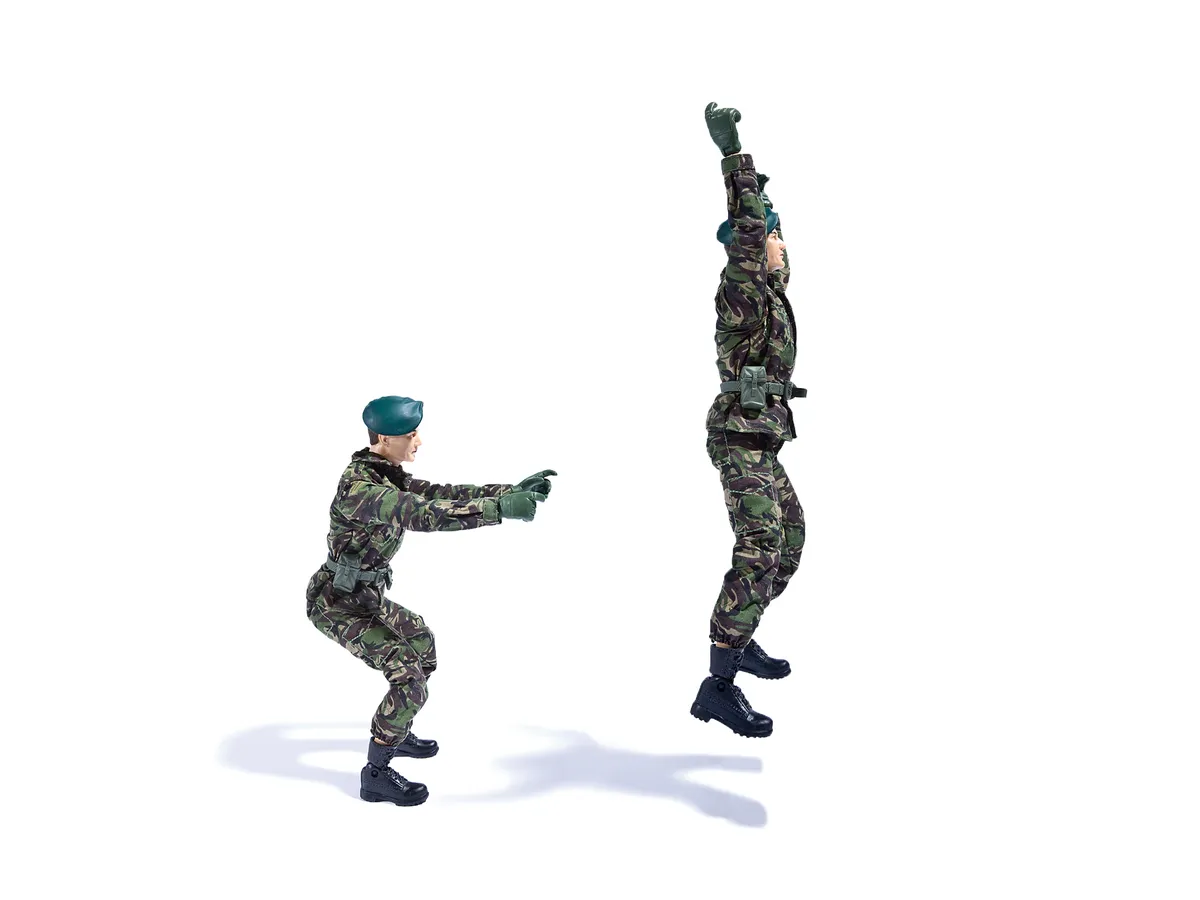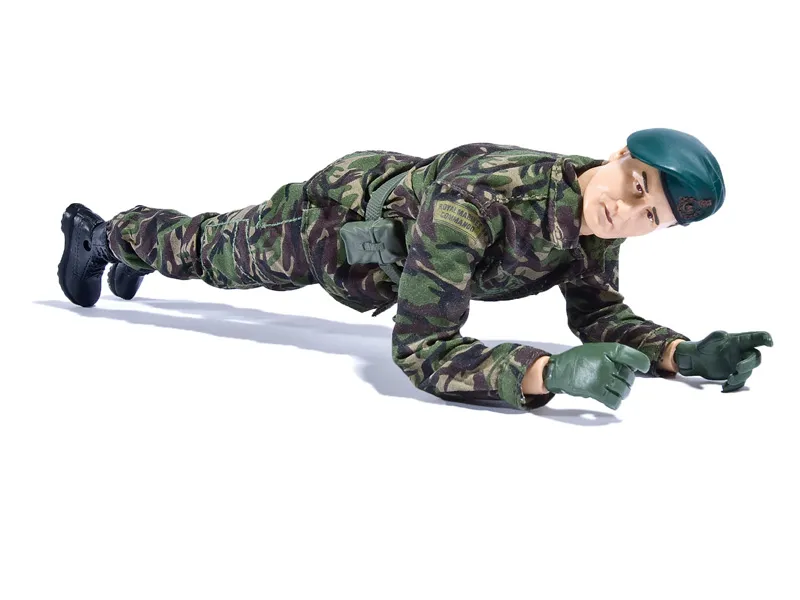As cyclists, we know all about getting fit and having fun out in the fresh air. These are key elements of the classes run by British Military Fitness too, as keen cyclist and BMF instructor Jason Revel will tell you.
Revel, who’s been cycling for about 10 years, is responsible for the fitness of 200 soldiers in training and he competes in triathlons and road races. He also commutes by bike to all his BMF classes and feels that the workouts can have a positive impact on any cyclist’s training regime.
To demonstrate how, he outlines six steps to fighting yourself fit…
1 Plyometric squat jump

This exercise places an overload of weight on your thighs, the main source of power for any cyclist. This helps them gain strength and power, needed for better endurance and speed. It’s imperative that you keep your back straight during this exercise. Stand with your feet shoulder-width apart and squat down as if you were sitting on a chair. As you do so, raise your arms level with the ground. When your thighs are parallel to the ground, jump up as high as you can throwing your arms up in the air. Go for height during this exercise. On landing, return to a seated squat in slow motion. Repeat for one minute and rest for 20 seconds. Complete three sets.
2 The bridge

This is a core stability strengthener. It also works your gluteus maximus and hamstrings, helping them to gain increased strength and power necessary for high pedalling cadence. Lie flat on your back with the soles of your feet firmly on the ground. Thrust your hips up, trying to get them as high as you can. Keep your hands palms down beside your body. To increase the intensity you can raise one leg off the ground and extend it straight. Hold for 30 seconds, release for 10 seconds. Repeat three sets.
3 The Plank

This helps strengthen your core, which is an important factor in any cyclist’s fitness regime. A strong core provides a stable pedalling platform and helps maintain good posture, lessening the risk of back pain. To carry out the plank you need to get yourself down into the press-up position. However, instead of placing the palms of your hands on the ground, place your forearms on the ground. It’s important to keep your backside down and your body straight. A trick to this is to look up, as then you’ll naturally drop your backside. Hold the plank by tightening your stomach muscles, until you can’t hold it any more. Complete three sets with a 30-second rest between each set. To make the plank harder you can extend one arm in front of you.
4 Step-up

Find a kerb or a step. Stand front on to it and step up, leading with your left foot, so both feet are fully on the step, including the heel, then step down. Now step up leading with your right foot and step down. Complete three 90-second sets as fast as you can. As a cyclist it’s essential to have a strong and healthy heart and lungs, and because this is a good cardiovascular workout it strengthens both, as well as providing further training for your thighs. It’s important to complete the entire step-up as many people tend to hop from foot to foot.
Ski jumps

This is another exercise to overload your thighs, especially as plyometric training has been proven to significantly strengthen leg muscles. The starting position is to stand as if you were in a lunge walk, rear knee just off the ground, front knee bent and again your back must be straight and body upright. Your fingers should be resting on your temples and your elbows hanging naturally by your sides. From this position jump in the air, going for height and at the same time swapping your legs over so the rear leg becomes the front leg and vice versa when you land. Complete three sets, continuing until you have to stop, with a 30-second rest between sets.
6 Pairs resistance running

For this exercise you’ll require a partner of roughly the same size as yourself. Face your partner and place your hands on his or her shoulders. They should then start running, pushing you backwards as you provide resistance to increase their workload. Your partner needs to be driving forward with arms and legs. For the first rep cover 50m, for the second rep 60m and for the third rep 70m. This should give a good burn to their thighs, strengthening the quad muscles, and strengthens your arms, which can be neglected in cycling. A straight back is important. Swap positions and repeat the exercise.
Other ways to fight yourself fit
Boxercise: “A Boxercise class will improve cardiovascular fitness as well as strength, speed and reaction times, making it perfect for a cyclist who needs to be constantly aware of their surroundings. Boxercise will complement any cross-training due to the different energy systems used, so to add variety to a cyclist’s programme or as something different during the off-season it can be really beneficial.” Fran Checkley, senior instructor for Boxercise Ltd.
Fencing: “Fencers have very strong, well-developed quads, which are obviously key muscles for cyclists. They get these from frequent lunging and because the fencing stance and footwork require both knees to be bent all the time so the legs work constantly with no relaxation phase. Furthermore, flexibility of the hips and shoulders is important for fencing so fencers stretch these joints regularly in their warm-ups and often the hips after training or competing. The wide range of joint movement involved in fencing would be beneficial for cyclists in maintaining flexibility.” Dr Clare Halsted, medical officer for British Fencing.
